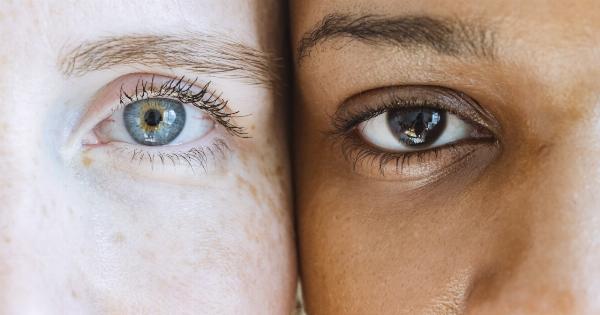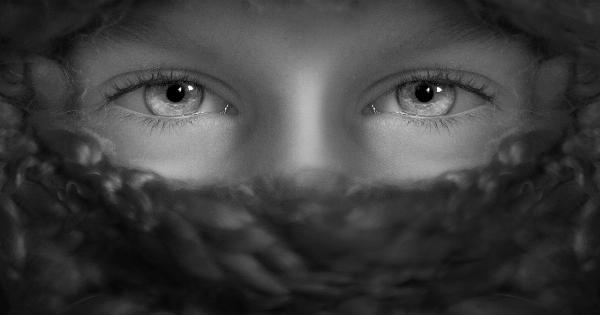Vision loss is a condition that can affect anyone. It can occur due to various reasons, including aging, diseases, trauma, and genetic factors. It can be temporary or permanent, partial or complete, and can affect one or both eyes.
In this comprehensive guide, we will explore the types, causes, symptoms, diagnosis, and treatment of vision loss.
Types of Vision Loss
Vision loss can be classified into two main types:.
Central Vision Loss
In this type of vision loss, the central part of the visual field is affected. This makes it difficult to see details, read, drive, recognize faces, and perform other activities that require clear and sharp central vision.
Central vision loss can be caused by age-related macular degeneration (AMD), diabetic retinopathy, glaucoma, cataracts, and other eye diseases.
Peripheral Vision Loss
In this type of vision loss, the outer part of the visual field is affected. This makes it difficult to see objects on the sides, navigate in crowded places, and detect motion in the periphery.
Peripheral vision loss can be caused by retinitis pigmentosa, glaucoma, stroke, brain injury, and other conditions.
Causes of Vision Loss
The causes of vision loss can be genetic or acquired. Genetic factors include inherited eye diseases such as retinitis pigmentosa, Stargardt disease, Leber congenital amaurosis, and others. Acquired causes of vision loss include:.
Eye Diseases
Age-related macular degeneration (AMD), diabetic retinopathy, cataracts, glaucoma, retinal detachment, and other eye diseases can cause vision loss if left untreated.
These diseases may affect the retina, lens, cornea, or optic nerve, depending on the condition.
Systemic Diseases
Systemic diseases such as diabetes, hypertension, multiple sclerosis, and others can affect the blood vessels, nerves, and tissues of the eyes, leading to vision loss.
These diseases may cause retinal damage, optic neuropathy, or other complications that affect vision.
Trauma
Eye injuries, head injuries, and other forms of trauma can cause vision loss, depending on the severity and location of the injury. Trauma may result in retinal detachment, optic nerve damage, or other complications that affect vision.
Toxins
Toxic substances such as drugs, alcohol, tobacco, and other chemicals can cause vision loss, especially if used or consumed in large amounts or for long periods.
These substances may affect the optic nerve, retina, or other parts of the eyes, leading to vision loss or blindness.
Symptoms of Vision Loss
The symptoms of vision loss depend on the type and severity of the condition. Some common symptoms include:.
Blurred Vision
Objects may appear blurry or out of focus, making it difficult to see details or read.
Reduced Vision
Vision may be reduced in one or both eyes, leading to partial or complete blindness.
Double Vision
Objects may appear as two images, causing confusion and difficulty in judging distances and movements.
Distorted Vision
Objects may appear distorted, wavy, or crooked, making it difficult to recognize faces, read, or drive.
Loss of Peripheral Vision
The outer part of the visual field may be affected, making it difficult to see objects on the sides or detect motion in the periphery.
Loss of Contrast or Color Vision
The ability to distinguish colors or shades may be reduced, making it difficult to see in low light or distinguish between similar objects.
Diagnosis of Vision Loss
The diagnosis of vision loss involves a comprehensive eye examination by an ophthalmologist or optometrist. The exam may include:.
Visual Acuity Test
This test measures the clarity and sharpness of vision using a standardized eye chart.
Visual Field Test
This test measures the extent and quality of peripheral vision using a computerized device.
Eye Pressure Test
This test measures the pressure inside the eye to rule out or diagnose glaucoma.
Funduscopy
This test examines the soft tissues and blood vessels of the eyes using a special device called an ophthalmoscope.
Fundus Autofluorescence Imaging
This imaging test helps to visualize the structure and function of the retina.
OCT (Optical Coherence Tomography)
This non-invasive imaging test helps to visualize the structure and function of the retina, optic nerve, and macula.
Treatment of Vision Loss
The treatment of vision loss depends on the type and severity of the condition. Some options may include:.
Medication
Topical or oral medications may be prescribed to treat eye diseases such as AMD, diabetic retinopathy, and glaucoma. These medications may slow down the progression of the disease, reduce inflammation, or improve blood flow to the eyes.
Laser Therapy
Laser therapy may be used to treat eye diseases such as diabetic retinopathy, retinal tears or detachments, and glaucoma. This involves using a laser to seal leaking blood vessels, shrink abnormal growths, or relieve pressure on the optic nerve.
Surgery
Surgical procedures may be used to treat eye diseases such as cataracts, glaucoma, retinal detachments, and other conditions. These procedures may involve removing the lens, inserting a shunt, or repairing a tear or detachment of the retina.
Assistive Devices
Assistive devices such as magnifiers, telescopes, and electronic aids may be helpful in improving vision for people with low vision or legal blindness.
These devices may enhance the size, contrast, or brightness of objects, making it easier to see and perform daily activities.
Lifestyle Changes
Lifestyle changes such as diet, exercise, and smoking cessation may help to improve vision and prevent eye diseases. A balanced diet rich in vitamins, minerals, and antioxidants may reduce the risk of AMD and other eye diseases.
Regular exercise may improve blood flow to the eyes and reduce the risk of systemic diseases that affect vision. Quitting smoking may reduce the risk of cataracts, AMD, and other eye diseases.
Conclusion
Vision loss is a serious condition that requires prompt diagnosis and treatment. Understanding the types, causes, symptoms, diagnosis, and treatment options can help people with vision loss to manage their condition and improve their quality of life.
Regular eye exams, healthy lifestyle habits, and timely treatment of eye diseases can help to prevent or minimize vision loss.


























